A Great Tool, Now Even Greater
Since its debut, iMeanAI has redefined what it means to plan a trip with AI. With its seamless interface, intelligent dialogue, and ability to turn vague travel ideas into structured, personalized journeys, it quickly became a go-to tool for modern travelers. For many, it wasn’t just helpful—it felt like the future.
Now, that future has taken a major leap forward.
The latest update brings iMeanAI to a new level of precision, intuition, and interactivity. Planning flows faster. Conversations feel smarter. Locations sync instantly with maps, and recommendations come packed with relevant context. It’s not just an ai trip planner—it’s the most capable AI travel assistant yet.
What was once groundbreaking is now even better.
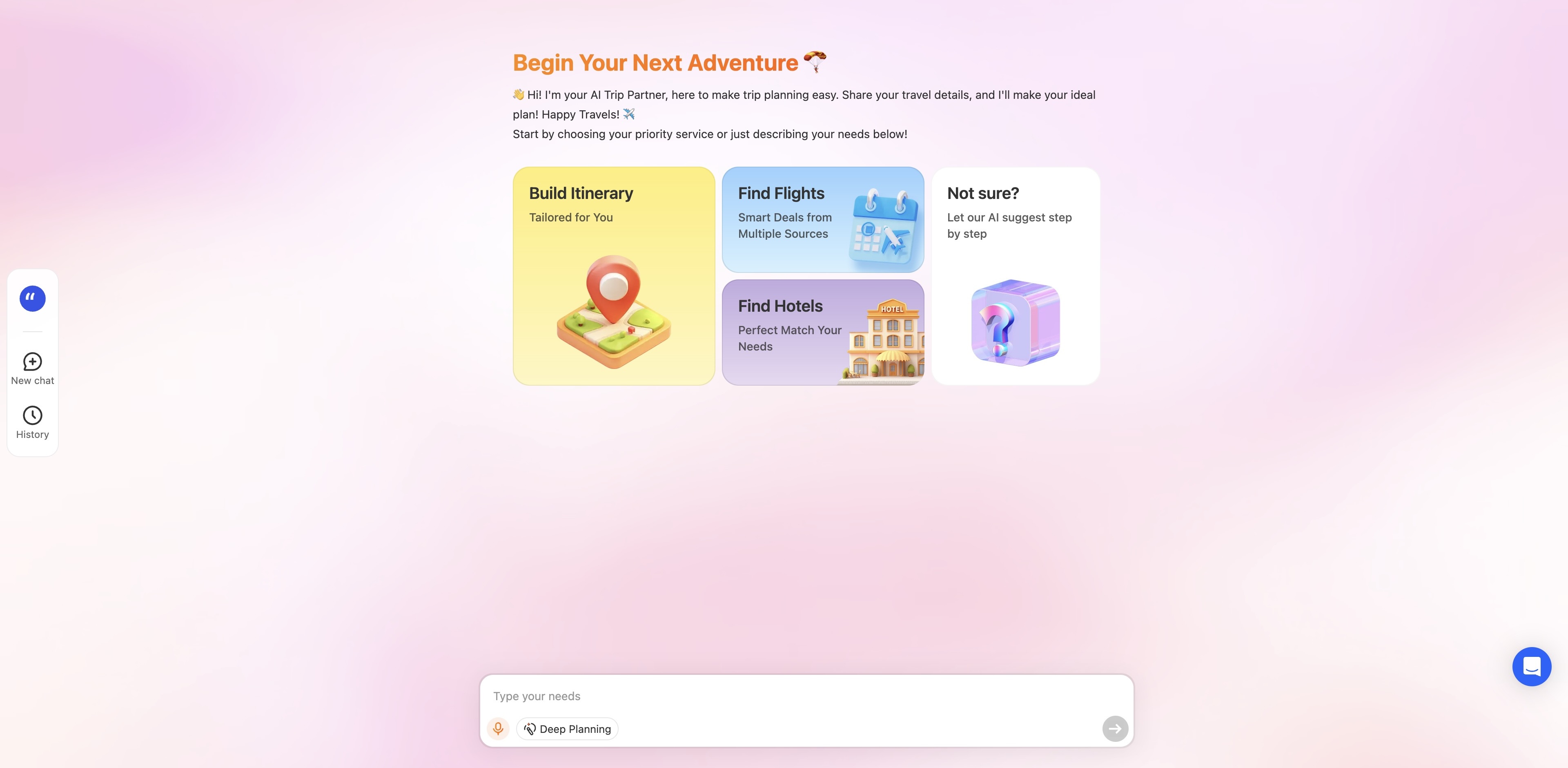
Where the Update Shines: One Trip, More Breakthroughs
To understand how iMeanAI’s latest update transforms the travel planning experience, we tested it on a real scenario—one that combines business, leisure, and multiple international legs:
“I plan to leave New York on September 1 and arrive in Singapore the same day for a conference near Marina Bay. I’ll stay in Singapore for three days, then fly to Tokyo on September 5 and explore the city for five days. After that, I’d like to relax in Bali for a week and return to New York before September 18. I don’t like red-eye flights or long layovers.”
From a single input, iMeanAI generated a complete, multi-city itinerary—with daily plans, recommended flights, hotels, restaurants, and even map routes—organized around our exact needs. Here’s how the new version made it all work:
1. Map-Synced Conversations
As soon as we mentioned “Marina Bay,” the AI marked it on an interactive map. When we later asked for restaurants nearby or hotels within walking distance, they appeared directly on the map, complete with icons, walking times, and context.
In Tokyo, every sightseeing stop was plotted in relation to our hotel and subway lines, allowing us to visualize the daily pace of the trip in real time.
This visual layer, fully integrated with the chat, eliminated the usual back-and-forth between tabs or apps. iMeanAI didn’t just plan the route—it showed how it fit together
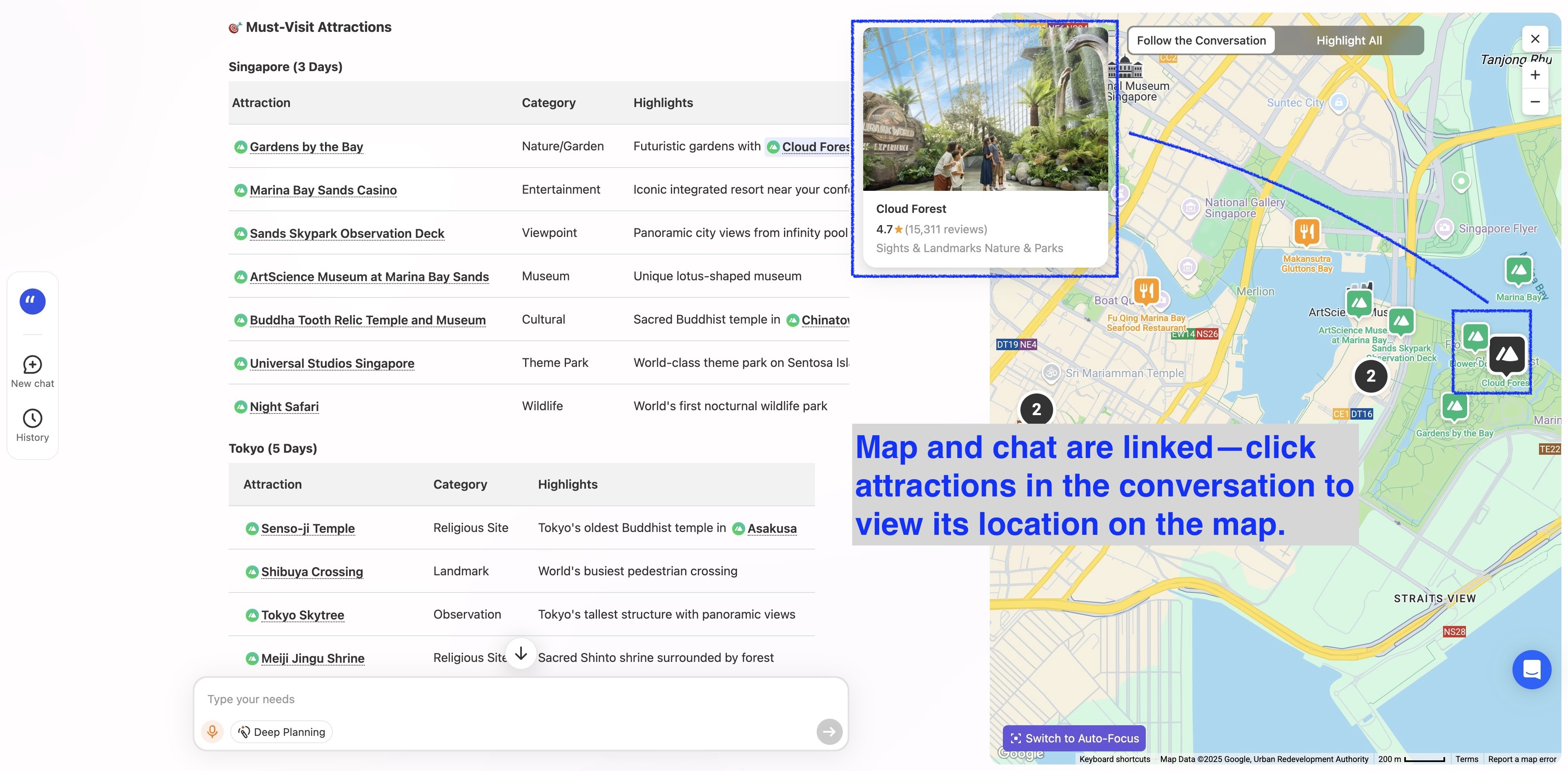
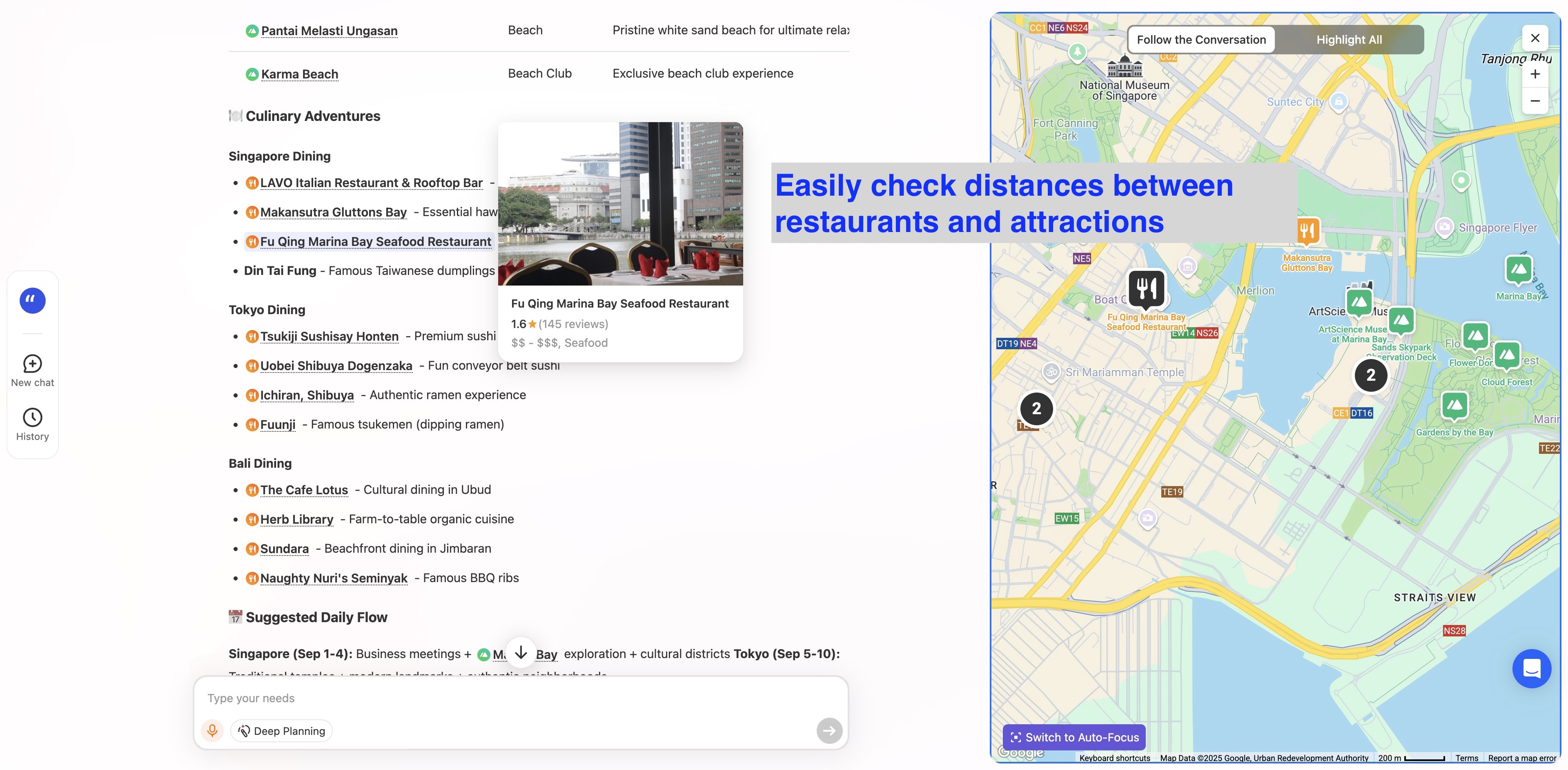
2. Restaurant & Attraction Details
Previously, recommendations like “try a sushi place” or “visit the gardens” offered little depth. Now, every suggestion comes bundled with practical metadata: business hours, user reviews, average pricing, and map placement.
In Singapore, iMeanAI recommended a hawker center open late into the evening near our hotel—ideal for a post-conference meal. In Tokyo, its ramen picks included tips like “line peaks at 12:30 PM” and “cash-only,” with direct links to menus or review pages.

In Bali, where dining often blends into leisure, the AI curated wellness cafes and beachfront venues aligned with our hotel’s location—without us even having to ask. This level of proactive content marks a major leap from the earlier version’s passive listing style.
%20(8%20x%206%20%E8%8B%B1%E5%AF%B8%20-%202025-07-24T153543.015.jpeg)
3. Flight Recommendation Transparency
Flight selection used to be one of the most opaque parts of trip planning. iMeanAI now brings full reasoning into every suggestion. From New York to Singapore, the recommended option included the label “direct route, avoids overnight travel,” while other routes were marked with pros and cons like “shortest total travel time” or “best price but longer layover.”
From Tokyo to Bali, the AI noted that a slightly more expensive flight shaved off nearly five hours of travel and avoided a 2 a.m. airport transfer—explaining that cost tradeoff in plain terms. Every flight result came with not just filters, but logic.
This is no longer just an ai flight search. It’s a decision support engine that anticipates what matters most to you.
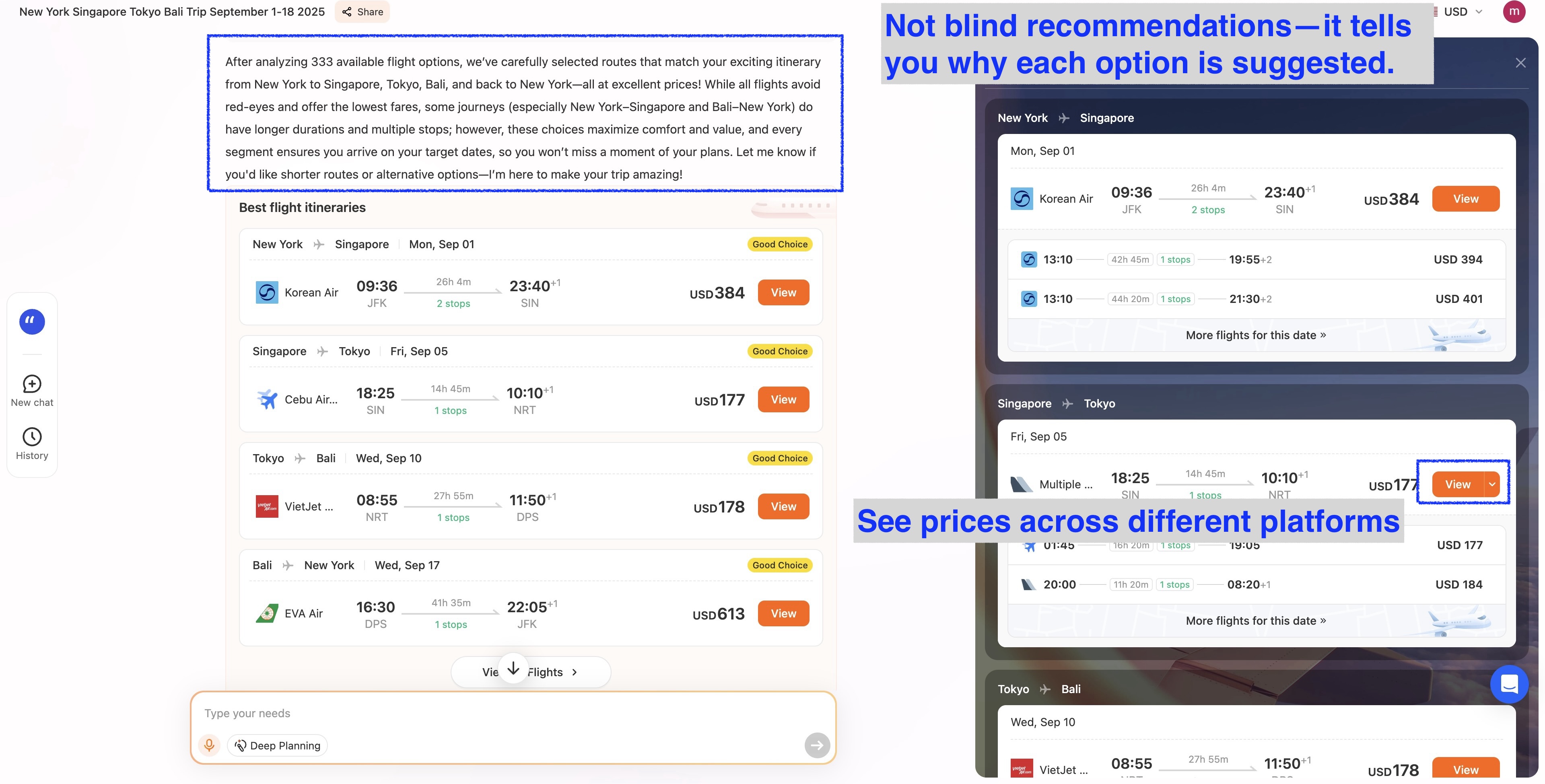
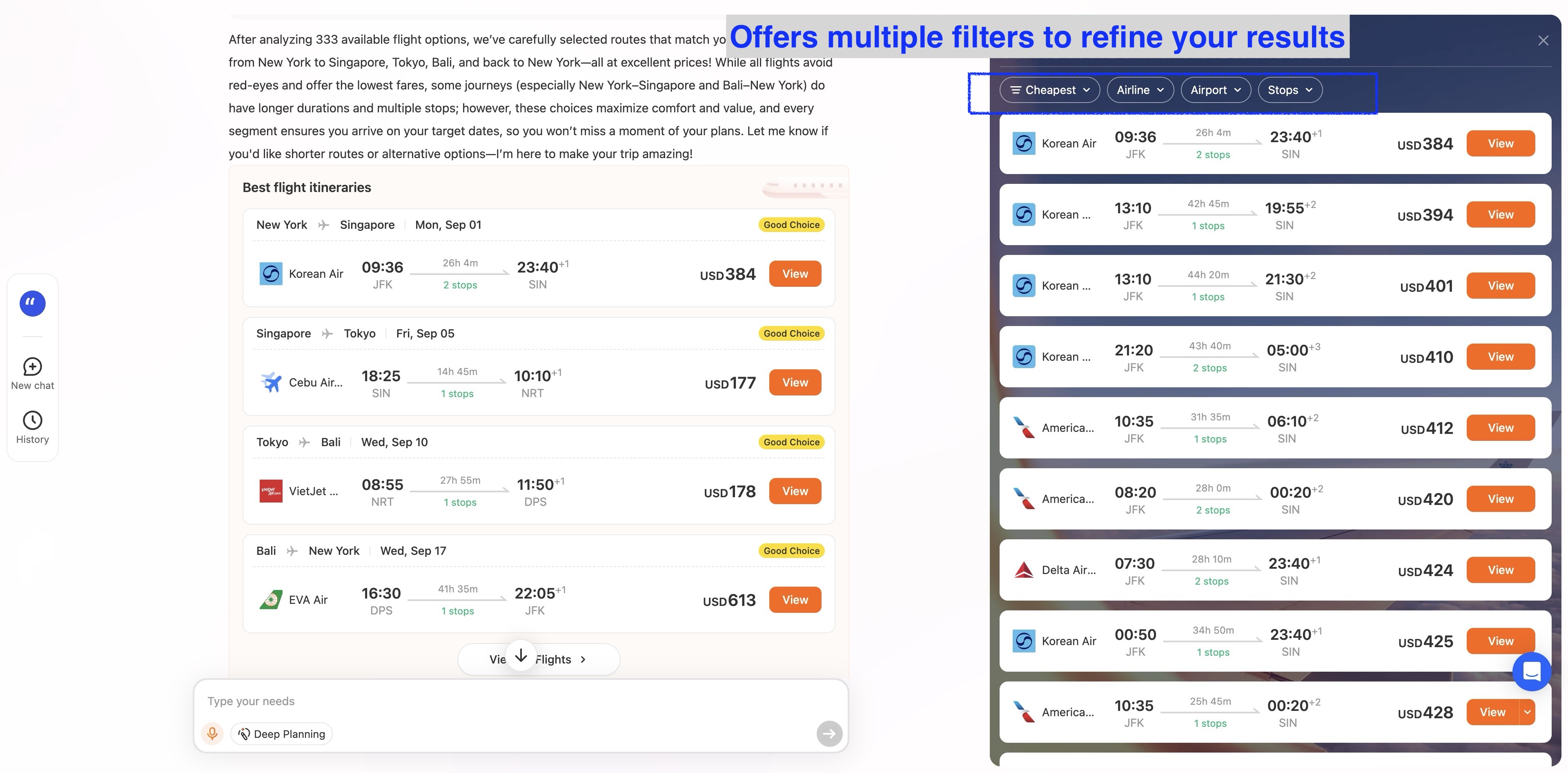
What “Smarter” Really Feels Like
With these upgrades, iMeanAI is no longer just responding to requests—it’s interpreting intention. The AI remembered our aversion to red-eyes and avoided them across all four flights without needing repeated reminders. When we said, “Make Tokyo more relaxed,” it automatically removed tight museum-hopping blocks and expanded lunch breaks with nearby cafes.
This kind of memory and adjustment feels genuinely intelligent. It brings iMeanAI closer to being a full AI trip assistant, not just a search interface.
The update also hints at what’s coming next. According to the team, future releases will integrate:
- Real-time voice interaction
- AI-powered weather and delay alerts
- Group trip coordination tools
- AR navigation for landmarks and walking routes
These additions suggest iMeanAI is working toward an all-in-one travel system—not just a planner, but a travel partner that evolves with your journey.
A Quiet Revolution in Travel Tech
In an era when travel planning often feels like a fragmented chore, iMeanAI’s newest release offers rare clarity. It simplifies the messy parts, automates the tedious ones, and makes intelligent guesses about the rest.
For travelers tired of toggling between browsers and spreadsheets, iMeanAI represents a shift—from searching to deciding, from scheduling to flowing.
Try it for your next trip: www.imean.ai

%20(8%20x%206%20%E8%8B%B1%E5%AF%B8%20-%202025-07-24T155228.157.jpeg)



